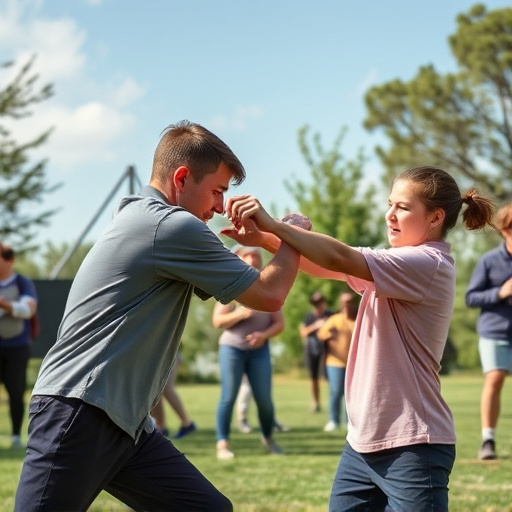College students can significantly enhance personal safety through a combination of environmental awareness, digital security practices, and basic self-defense techniques. Key strategies include mentally mapping campus layouts, staying alert, keeping phones charged, downloading safety apps, learning simple self-defense moves, understanding cybersecurity best practices, and familiarizing themselves with campus safety procedures. By adopting these measures, students can confidently navigate college environments, reducing risks and building confidence in their personal protection.
“Ensuring personal safety on college campuses is paramount for students navigating new environments. This comprehensive guide explores essential aspects of self-defense for college students, empowering them to stay secure both offline and online. From understanding your surroundings and adopting risk mitigation strategies to mastering self-defense techniques and leveraging campus resources, we equip you with the knowledge to protect yourself. Discover how to navigate the digital age safely while embracing academic life’s opportunities.”
Understanding Your Surroundings: Awareness and Risk Mitigation Strategies for College Students
In the dynamic environment of college campuses, understanding your surroundings is a powerful tool for personal safety. College students often navigate bustling communities, from crowded classrooms to vibrant social spaces. Developing an awareness of your environment is a key self-defense strategy. This involves being mindful of your location, observing nearby landmarks, and noticing potential hazards or suspicious activities. By mentally mapping the layout of campus, you can quickly orient yourself and make informed decisions in unfamiliar areas.
Risk mitigation strategies play a crucial role in ensuring personal safety. Students should stay vigilant, especially when walking alone at night or in isolated areas. Simple precautions like keeping your phone charged, downloading safety apps, and sharing your location with trusted contacts enhance security. Additionally, learning basic self-defense techniques empowers students to respond effectively if faced with unexpected situations. Understanding the dynamics of public spaces on campus and being prepared for potential risks contribute to a safer college experience.
Self-Defense Techniques Every College Student Should Know
College students, especially those living on campus, should prioritize their personal safety. Self-defense is a crucial skill that can empower individuals to protect themselves in various situations. Learning basic self-defense techniques isn’t just about physical strength; it’s about understanding how to deter potential threats, escape dangerous encounters, and gain the time needed to seek help.
Some essential skills every college student should consider include awareness of their surroundings, knowing when to flee or fight, and employing simple yet effective moves. Basic strikes, blocks, and escapes taught in martial arts classes can be life-saving. Online resources and apps offering self-defense tutorials are readily available, making it easy for students to learn fundamental techniques from the comfort of their dorm rooms. Familiarizing themselves with campus security procedures and emergency contact numbers is equally vital for maintaining safety while attending college.
Utilizing Campus Resources: Safety Measures and Support Systems on College Campuses
College campuses offer a wealth of resources designed to enhance student safety and provide support systems for various needs. Many institutions employ dedicated public safety officers or departments that oversee emergency response, crime prevention, and overall campus security. These professionals conduct regular patrols, install security cameras, and implement access control measures to deter and address potential threats. Students can leverage these resources by familiarizing themselves with emergency procedures, reporting any suspicious activities, and utilizing on-campus counseling services for personal safety concerns or emotional well-being.
Beyond physical security, colleges often provide self-defense classes as part of their student wellness programs. These workshops empower students with practical skills to protect themselves in various situations. By combining awareness, prevention strategies, and tangible self-defense techniques, college students can better navigate potentially dangerous environments and build confidence in their ability to maintain personal safety.
Personal Safety in the Digital Age: Protecting Yourself Online and Offline
In today’s digital era, personal safety extends beyond physical boundaries; it encompasses both online and offline spaces. College students, in particular, face unique challenges when it comes to self-defense. With an increasing reliance on technology, they must be equipped to protect themselves from cyber threats such as identity theft, phishing scams, and online harassment. Just as important is understanding the potential dangers lurking in campus environments, from simple muggings to more complex situations involving personal information or digital privacy.
To enhance self-defense for college students, it’s crucial to develop a multi-layered approach. This includes practicing good cybersecurity habits, such as using strong passwords and enabling two-factor authentication. Offline, students should be aware of their surroundings, avoid sharing sensitive information with strangers, and familiarize themselves with campus safety protocols and emergency contact procedures. By combining digital literacy with situational awareness, college students can better navigate both the virtual and real-world dangers that may arise during their academic journey.
